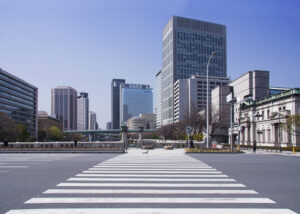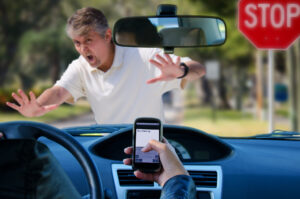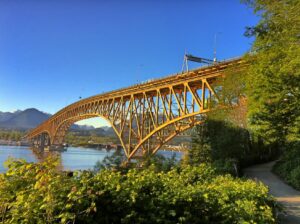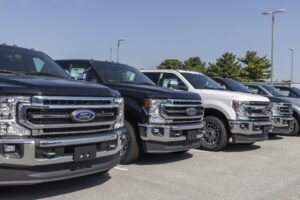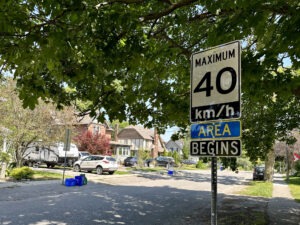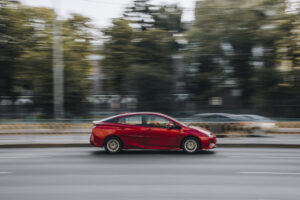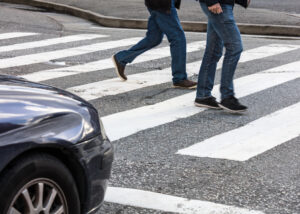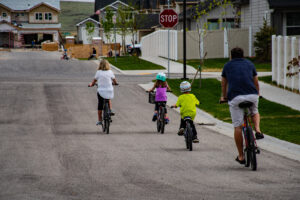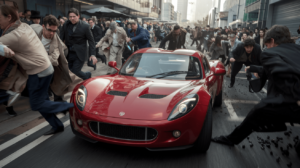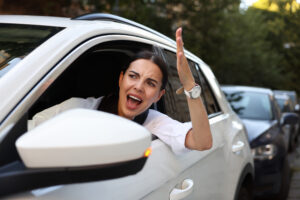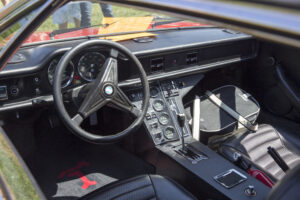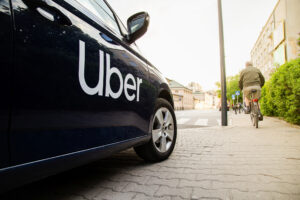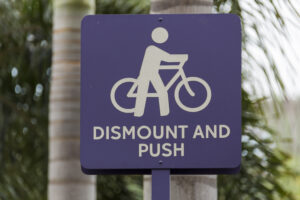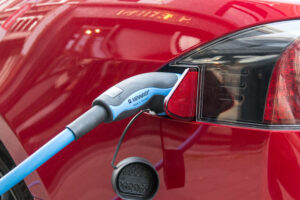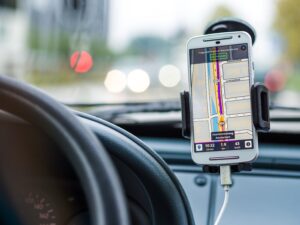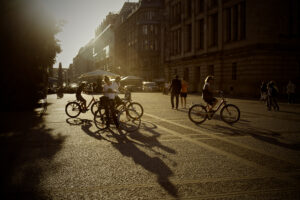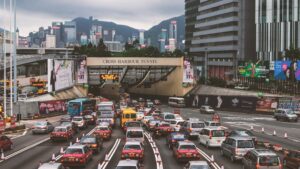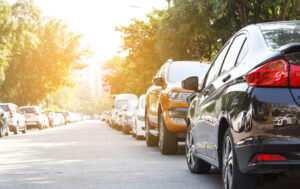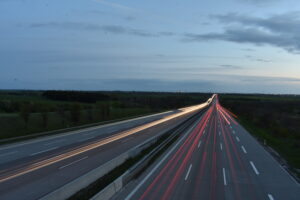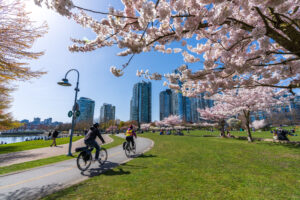Home

LATEST POSTS
 Subscribe To My RSS Feed
Subscribe To My RSS Feed
September 12, 2025Reading Time: 2 minutes
So unless you live under a rock, on Mars, with your hands over your ears and your eyes firmly shut… you’ve heard about the killing of podcaster Charlie Kirk at his speaking event in Utah. So why am I talking about this on FreeMoveCity? Well, it’s relevant—theoretically.
Among many of Kirk’s famous, and now infamous, his statement on America’s Second Amendment stands out:
“I think it’s worth it. I think it’s worth to have a cost of, unfortunately, some gun deaths every single year so that we can have the Second Amendment to protect our other God-given rights.” —Kirk, 2023
Now that he is one of those statistics, it’s worth examining this statement as a baseline study of theory versus practice.
In theory, Kirk stands and stood by this statement.
In practice, we could well imagine the last thought that ran through his mind was, “Oh—I didn’t mean ME.”
And that’s the dichotomy, folks. It’s easy to say: “Listen, we can’t save everybody…” and a lot harder to swallow the pill when the person sacrificed to the Second Amendment is you, or someone you love.
And we see the exact same discussion on traffic fatalities.
Vision Zero, and international organization devoted to eliminating ALL traffic fatalities, is often criticized as presenting an unrealistic goal.
You could imagine a similar statement:
“I think it’s worth it. I think it’s worth to have a cost of, unfortunately, some traffic deaths every single year…”
Because it’s easy to say, yeah, we can’t save everybody.
Harder when it’s your child run over at a crosswalk; or when it’s you getting T-boned at an intersection on your way to work.
Because it’s not longer a statistic then, is it? No. it’s a tragedy.
In the past year, Helsinki, Finland, has recorded ZERO traffic fatalities. Vision Zero achieved, in a city of 1.5 million people.
If they did it, so can everybody else. Because we don’t have to accept any deaths to have a FreeMoveCity.
And no, Charlie, I disagree. We didn’t have to accept your death, or the countless others either.
We can do better. Because as they say, in theory there’s no difference between theory and practice.
But in practice, there is. [...]
Read more...
September 6, 2025Reading Time: 2 minutes
Who would have—or could have—guessed that the simple meme would become one of the most influential forms of communication in the 21st century.
Memes have tipped elections. They’ve instigated riots. They formed public health policies.
They’ve actually done a lot of harm, usually by boiling down complex ideas into the simplest possible forms, stripping the conversation of nuance and appealing to our base sensibilities and lazy preconceptions.
So, of course, I thought I’d make a few too.
‘Cause screw it. If memes are how we want to talk to each other—if this is our battleground—then I’ll join the fight.
Let’s have the conversation where people are. The meme-verse.
So without further ado, here are my memes. Public transit. Cycling. Driving. Walking.
All the stuff that we deal with every day trying to live in a FreeMoveCity.
(Oh, and hey—try to guess which one got me suspended from Threads! Comment your guess below.)
Steal ’em. Use ’em. Ignore them. Comment below and call me cringe.
All good. [...]
Read more...
September 3, 2025Reading Time: 3 minutes
When a pedestrian is killed or injured by a vehicle, too many of us immediately jump into the shoes of the driver. Try thinking of the pedestrian—it’ll change everything.
You likely heard of the horrific case of an 11-year-old child being murdered in Texas. Shot in the back while playing a silly game of “ding dong ditch”—that joke where one rings a doorbell and runs off.
En masse, less the most deplorable of Americans, people are outraged at this senseless violent killing.
Because we all imagine it’s our kid. Or our neighbours. Or even ourselves.
How could someone kill so callously? How come we don’t better protect our children?
But pedestrians don’t receive the same grace. Not even a little bit.
Take for example, this recent incident in North Vancouver, where a 16-year-old child was run down in broad daylight while crossing a marked crosswalk.
You’d think it would be a chance for the community to band together, right? To speak out about road violence, speeding and distracted driving.
To demand safer infrastructure for our kids!
Well, no. That didn’t really happen. Instead, here’s what I found on Facebook.
Here’s a post from one concerned citizen who admits she doesn’t know anything about what happened but is pretty sure the girl is to blame. Twenty-eight likes.
Or another, who also agrees pedestrians really should be more careful when crossing marked crosswalks—after all, drivers can’t be held responsible!
Or one more, who agrees wholeheartedly—after all, her biggest fear is that she has to live with killing someone. Really, she’d be the true victim in this case.
Or another one of Diane Materi’s fans, who pretty much thinks this child had it coming.
This isn’t new. This is the basic sentiment every time a pedestrian gets killed or injured.
(Yes, there were other comments in opposition to these… but the fact that 100% of the community hasn’t rallied is unacceptable. When I was a kid, one of my friends got run over trying to jaywalk to a Dairy Queen. The town immediately built a controlled crosswalk that is still in use today—some 35 years later. What happened to us?)
These Facebook comments are the modern-day equivalent of the “what was she wearing?” trope.
But imagine if, anytime you saw or heard about a pedestrian casualty, you thought:
Wow—that’s awful. I’d hate to have my life ended that way. Or my any of my loved ones. I should probably slow down and put away the phone. After all, road safety is MY—the driver’s—primary goal and responsibility.
But, inserted, we have to deal with people like the above… and the millions like them. All dead-set on blaming the victim. [...]
Read more...
August 10, 2025Reading Time: 2 minutes
When you think of books like Fahrenheit 451, government authoritarianism comes to mind. But what if certain dystopian aspects from this work are already in play—and we didn’t even notice?
In Ray Bradbury’s famous novel, Fahrenheit 451, we delve deep into a society of censorship and government overreach. Terrifying, right?
(Don’t get me started…)
But there’s a B-plot at work too—that is the callousness of road violence. Highways are portrayed as a place of danger. Crossing one, on foot? Deadly!
In fact, a primary character is run over and killed by a car. A senseless death we can all relate to.
Characters being killed in “car accidents” is a recurring occurrence in books, TV and movies. Basically, anytime a character needs to be “offed” with no questions, lead-up or follow-through—run ’em over.
We see this in the book and TV Show Lessons in Chemistry.
Meet Joe Black famously starts with a pedestrian death.
After 11 seasons on Grey’s Anatomy, McDreamy himself was shuffled off-screen by a sudden “car accident.”
(Oh, spoiler alert, I guess.)
Why? Because it’s so damn believable. It’s so damn common. It raises no questions.
Just, “Oh—killed by a car? Yeah that tracks.”
But it’s getting really bad—in terms of how we address pedestrian deaths.
Take the case of the North Carolina couple now facing involuntary manslaughter charges for the death of their child.
Their crime? They allowed a seven-year-old to cross a street without an adult.
He was run down and killed without any charges to the driver.
Just to the parents.
As the act of walking across a street is seen as so deadly—even in the suburbs of a small-size US city—that a parent allowing a child to do so can be criminally charged.
From The New York Times:
“But if something that used to be a normal childhood activity is now seen as so dangerous that parents who let their sons walk in the neighborhood are considered felons, the problem is not just with how we enforce our laws but also with how we allow cars to define how we live.”
This, my friends, is how the sub-plot of Fahrenheit 451 came to life.
And we didn’t even notice. [...]
Read more...
August 7, 2025Reading Time: < 1 minute
You’re not stuck in traffic, you are traffic.
In my home city of Vancouver, British Columbia, traffic… isn’t great. I’m sure your city is similar. In fact, if you live in a town of more than about 15,000 people—I’m confident you’ve complained about traffic before.
You’ve likely complained about it, though, as if it’s an external force being imposed on YOU by OTHERS.
That’s not the case.
Take the example of North Vancouver, BC—a suburb city of Vancouver—where folks commute in droves to The Big Smoke via one of two bridges, or the SeaBus, the city’s most unique form of public transit.
Traffic on the bridges is bad at the best of times—and when something goes wrong, say an incident or just extreme volume, the entire region becomes a parking lot.
So North Vancouver folks want a third bridge crossing. They’re petitioning for it.
Of course, this is nothing new. Folks in every city in North America are asking for new highways, bridges and tunnels.
Except it never solves the problem. Like, never.
Imagine a river. If you widened it, would it run shallower? Nope. What happens is something like THIS.
You create demand and traffic fills it. To capacity. Then the same problems persist except now you’ve spent millions of dollars.
The underlining issue is that commuters see themselves as victims of traffic, not perpetrators of it. And they likely will never change.
So we have to change our perception—and stop rewarding commuters for creating traffic and start asking them to pay up, or find a new way to work. [...]
Read more...
July 21, 2025Reading Time: < 1 minute
Just a short memorial for the world’s oldest runner.
Do you know who Fauja Singh is?
He was a fascinating man, born in Punjab, British India sometime around 114 years ago. I say “sometime,” as he had no official birth certificate—but this was the best of his knowledge and the knowledge of others.
Late in life, allegedly to help overcome the loss of his wife and son, he began to run competitively. Normally, when someone talks about a person who began running “late in life,” the may think “oh, like in your 50s?”
No, Singh was in his late 80s. And he took it ver seriously at 89—competing and ranking in timed events, for his age. Which admittedly likely saw very little competition—but still…
…This from a man who didn’t walk until he was five, due to illness.
He ran a marathon at 100 years old—failing to achieve an official World Record only because he has no official birth certificate.
He was and will remain a testament to active living, mobility and the joy of moving one’s body.
He was struck down and killed while crossing the street in his birth village of Beas Pind on July 14, 2025.
After all he had survived—two World Wars, Partition, immigration, loss, epidemics, pandemics and all the changes the world saw between 1911 and 2025…
It was an all too common an end for an uncommon man. Some idiot in a car, likely under the conscious or unconscious belief that his time or text messages were more important than the life of another… ran him over and took off without a care for anyone but himself.
Rest in Peace, Fauja Singh. You deserved a better end. [...]
Read more...
June 28, 2025Reading Time: 3 minutes
Full-size pickup trucks remain the most popular vehicles in Canada and the U.S.—despite the fact they are gas-guzzling, infrastructure-destroying people-killers. What can we do?
Nobody in North America wants to be told what to drive.
Unless it’s by the marketing teams at GM, Ford and Chrysler, that is.
Because they’ve spent decades and billions convincing suburban-dwellers that their grocery-getter of choice is a 5,000-pound, 19-foot-long pickup truck that gets 16 mpg and requires $5K worth of external cameras to be able to parallel park.
The Drive said it perhaps the best: “Hey, America: You Don’t Need a Pickup Truck, You Need a Cowboy Costume.”
This is backed by facts. While the Ford F-150 remains the most popular vehicle in the U.S. and Canada, 70% of their owners only go off-road once a year, and some 35% actually ever tow with it.
Inspect the bed of the average pickup truck on your block—it’s spotless and scratch-free. And if there is anything in it, it’s no more than what could be carried by a station wagon or a bike-rack.
So yeah, save the me the “I need a pickup truck!” comments. Maybe YOU do. But the overwhelming bulk of drivers DO NOT.
But why care what others drive?
Well, these choices affect us all. On average, full-size pickup trucks get 10 mpg LESS than their passenger vehicle counterparts. Multiply that by millions and you have a climate-changing environmental disaster for no good God damn reason at all.
But the affects are also more immediate. Full-sizers weight between 4,500 and more than 6,000 pounds (yes, I know the EV weight problem and have written about it). All this extra weight wears out our infrastructure and burdens us with increased tax bills.
And finally, there’s the safety angle. A pedestrian has a 13% chance of dying if struck by a full-size pickup, compared to a 5% chance when struck by a passenger car.
Kids are eight-times more likely to be killed if struck by a full-size truck than a passenger car.
And all vehicles with hoods higher than 102 centimetres (40 inches) have a 40% greater likelihood of killing a pedestrian than vehicles with a hood height less than 76 centimetres (30 inches).
Not to mention the forward visibility of the average full-size pickup truck is worse than an M1 Abrams Tank. (Think about that the next time you see one roar by your front yard.)
I could go on and on about the dangers of high-hooded, heavyweight vehicles—of which pickup trucks are the poster children—but you get the point.
We all carry this burden to satisfy the needs of cowboy wannabes who roar around in road-monsters to cosplay as the Marlboro Man.
So what can be done? It would actually be a very easy solution. In fact, some jurisdictions are already doing it—they just don’t know it.
Alberta, for example, which is a hotbed of pickup trucks, added a $200 per year registration fee for EVs… citing among other things, their heavier weight being harder on infrastructure.
So close, Alberta!
Because I’m not proposing any regulations against specifically pickup trucks.
Just against heavyweights.
Simple. For any vehicle greater than 4,500 pounds, you pay an additional $500 per year registration fee. More than 5,500? Double it.
And for Heavy Duty pickup trucks—think F-350s and similar—you simply must present a valid commercial or business licence in order to register.
(I’m not trying to punish landscapers and farmers here!)
Now, if you wanna play cowboy—you gotta pay for the privilege. Simple as that.
Then watch as a base-model Toyota Tacoma or Honda Ridgeline suddenly fits the bill… [...]
Read more...
June 21, 2025Reading Time: 2 minutes
You can put up all the signs in the world, but only effective design changes habits.
Stanley Park, the most iconic green space in Vancouver, British Columbia, has a ring road around it with a 30 km/h speed limit. It’s a park, right? Such a school-zone speed makes sense.
And on the east side, most people follow it. It’s busy; lots of pedestrians. There are horse-drawn carriages. Speed humps. And the road is generally narrow.
But on the west side, all that changes. A steep downhill, away from most pedestrian traffic and tourism attractions, combined with two wide-open lanes, screams “floor it.”
Cyclists know this well. As we ride the downhill—admittedly breaking the 30 km/h rule ourselves—cars whip by, often doing 60 to 80 within the park boundary.
Why? The speed limit hasn’t changed. And it’s a park for crying out loud!
Easy—the road design says “go fast.” And that’s all people pay attention to.
Ain’t nobody driving 30 km/h here.
It’s akin to the design flaw seen in “Norman Doors.” (If you’re not familiar, it’s a door that visually tells you to pull, when in fact you should push. Or vice-versa. We’ve all encountered them.)
If you create wide-open roadways, people drive faster. Like a freeway—where speeds should be faster.
On residential roads, or within a park, the wider to roadway is, and the fewer impediments to speeding there are, the faster people will drive.
Even when it puts safety is at risk. It’s irrelevant. Open roads make slower speeds seem unbearably slow and provide the illusion of safety by freeing up your peripherals and requiring fewer micro-adjustments and less overall driver attention.
So you can put a “School Zone” sign out 10 times on one block, but if it’s a four-lane road with no speed humps and a straight-track to a thoroughfare—people will floor it.
This is why modern road design is changing, and needs to change, depending on the use-case of the road.
Residential areas must have roundabouts, traffic diverters, speed humps, narrower roadways, medians and other items of hard infrastructure to not only dissuade rat-running but to force drivers to the speed limit.
If you make it comfortable to drive 30 km/h, people will do so. It will route, or re-route, drivers back onto thoroughfares where they belong. And it will quiet down our residential roads and bring back outdoor play, bikes and block parties.
But if all your city is doing is posting “slow down” signs while building residential roads that looks like Route 66… well, good luck.
It’s just not human nature. [...]
Read more...
May 24, 2025Reading Time: 2 minutes
I’m pretty hard on cars—for good reason—but I still believe that pedestrians and cyclists have vital responsibilities. So let’s balance the scales.
Years ago, I read an article in a motorcycling magazine that really stuck with me.
It had a recurring theme—”You’re calling the wrong person an asshole.” And it related to the often-legal, sometimes-not-so-much, things motorcyclists do that put them in inherent danger, while also making it very difficult for road-users to accommodate them.
Things like riding your motorcycle in vehicle blind spots, etcetera.
You can also see stuff like this on semi-trucks—you know, stickers like “If you can’t see my mirrors, I can’t see you.”
It’s not illegal to drive a “normal distance” behind an 18-wheeler… but it’s not advised. They’re often doing their best, and working with a set of challenges that it’d be nice if you accommodated, dear driver.
That kinda stuff.
Which takes us to things that pedestrians and cyclists do that sometimes are, sometimes are not, legal… but frankly don’t make things easier on anyone.
In short, if you find yourself yelling at drivers in any of these situations—you might be calling the wrong person an asshole.
Cyclists: if you see a car with its turn signal on, then choose to pass that car on the same side—you’re calling the wrong person an asshole.
Pedestrians: If you stride boldly into traffic from behind vision-obscured areas and expect traffic to know you’re coming—you’re calling the wrong person an asshole.
Cyclists: If you bomb across a crosswalk without braking, dismounting or giving oncoming traffic any opportunity to slow—you’re calling the wrong person an asshole.
Cyclists: If you overtake vehicles from behind, exceeding speed limits and/or passing on double-solids—you’re calling the wrong person an asshole.
Pedestrians: If you choose to jaywalk—something I don’t believe should be a crime—but expect drivers to immediately accommodate you, even to their own danger, you’re calling the wrong person an asshole.
Cyclists: If you’re riding at a sustained 45-degree angle off a vehicle’s passenger-side C-pillar, they can’t see you—you’re about to call the wrong person an asshole.
Pedestrians: Even on a crosswalk, if you won’t allow the laws of physics to be applied against the inertia of a moving vehicle—it can’t stop on a dime—you’re calling the wrong person an asshole.
But ultimately, and all of this aside, if you drive a motor vehicle and you don’t believe that road safety for all users is your primary concern, function and responsibility—you are an asshole. [...]
Read more...
May 5, 2025Reading Time: 3 minutes
Social media has us fighting each other about pedantic and semantic issues facing urban mobility—while the powers that be rest upon their status quo… and laugh.
The late, great Sinead O’Connor once blasted “fight the real enemy” into our TV screens—a move that would see her rising career obliterated on the spot.
I’m not going to discuss the Catholic Church in this post, but her words are a good reminder to “speak truth to power” (perhaps said more diplomatically).
To keep your eyes on the prize.
This is one of the reasons I took to blogging rather than social media. Places like Facebook, Twitter and Threads are far too toxic to engage in meaningful discussion.
You simply end up with zealotry on all sides.
And that’s particularly the case with two of the topics I discuss: cycling and electric vehicles.
If you’ve ever socially posted an opinion about either of those things, you likely know what I’m talking about.
With cycling, I’m never that surprised. I just saw an FB post about Subaru’s new cyclist-safety external airbag… and people were posting with their God-given names how they’d prefer to “kill the cyclist” rather than pay for that feature.
Yikes.
Personally, I had to leave my neighbourhood Facebook group because I couldn’t stand all the “cyclists can’t run stop signs!” and “pedestrians aren’t dressed properly!” chatter.
(Not once did I see a post about safe driving.)
But this is all a distraction.
Same with EVs. I am, in many ways, more disappointed with the EV discourse. I like EVs. But at the same time, I believe in holding the industry’s feet to the fire.
You won’t find many people like that on social media. You’re either with the EV transition 100 percent, or against it fully.
Or, coming from the other side—you’re either a Truck Driving Patriot, or an eco-fascist.
Take discussions on Toyota. Once the poster child for the eco-car movement, this venerable Japanese company is now routinely dragged for failing to keep up with the EV transition. And sometimes even blamed for hindering it.
The fact that Toyota has put some 20 million hybrids on the road—replacing 20 million traditional ICEs—over the past 28 years, means nothing.
The fact that Toyota cites their 1:6:90 reason—that is, with the resources required to build the battery for a single BEV, you could build six PHEVs or 90 HEVs—is not good enough.
(Meanwhile Kia and Ford get accolades for building 2,700-kilogram EVs with batteries that use more Lithium than 10,000 iPhones.)
Or that Tesla, which has actually done more to facilitate the transition to EVs than any other company (save, perhaps Toyota, who showed us an electrified future back in 1997)… is now shunned by the same people who are fighting for electrification?
Hey—I’m no fan of Elon Musk either. Not at all. But when I hear someone proclaim they traded their Model S for a Porsche Taycan because they don’t want their vehicle associated with a Nazi… well… maybe they’re just not history buffs?
(Even if you don’t choose something emblazoned with the surname of a member of the Nazi SS, we all know the most environmentally friendly car you can own is the one you currently do. Even if it’s a Tesla.)
So what are we doing folks?
Are we throwing paint on parked Teslas, lambasting the inventor of the hybrid-electric vehicle, screaming at cyclists and pedestrians and wetting our pants over every new $100K EV that rolls off the assemble line?
Or are we laser-focussed on all levels of government, demanding more action directed at transportation equity and a future where we can all move freely and safely?
Don’t worry about your neighbour’s Model S. Or whether Toyota should be building more EVs. Or whether it should be legal for a cyclist to wear black. Or how long it’ll take to get your hands on that new Scout SUV.
Do worry about new highway construction, laws that permit housing densification, active transportation funding and parking minimums.
The other stuff will follow.
In short, choose revolution over civil war. [...]
Read more...
April 30, 2025Reading Time: 2 minutes
In the wake of the worst mass-killing in Vancouver’s history, we must ask the question: why is it so easy to do this?
Like many people in my home city of Vancouver, BC, I’m still grappling with the events of April 26, 2025. The mass-murder, by vehicle-ramming, of 11 people and the critical injury of dozens more at our annual Lapu Lapu street festival.
A single person, in a normal SUV, did this. Although the investigation is ongoing, there seems little doubt it was intentional. No clear motive at this time. No ideology identified. Just chaos and death.
We are grief-stricken.
This type of stuff doesn’t happen often, but it does happen. In 2018, 10 people were killed and another 16 injured in the infamous Toronto van attack. This one was also a lone psychopath, however, this time motivated by a hatred of women.
But to a lesser and different extent, it does happen often.
Case in point, two days after the horrors of Lapu Lapu day in Vancouver, four students were killed in Illinois when a driver crashed their vehicle into an after-school program.
Or a few years back, in Laval, Quebec, when a bus driver in a psychotic state killed two toddlers and injured six others at a daycare.
I’m not going to list every other instance where multiple people were killed by a vehicle. Nor will I try to connect motives or mindsets between the the varying ways it happens—ranging from terrorism, to mental health, to driver negligence.
What I’m asking is: why is it so easy? Why is it so easy for someone to just “go nuts” and commit mass murder? Or “lose control of their car” and mass-kill?
In Canada, we don’t allow folks to walk around with assault rifles for this reason. In many jurisdictions, we even have laws against certain types of knives.
But a car? For mass-murderers, it’s the ultimate loophole. And for others? You could kill half-a-dozen pedestrians because you looked at your phone.
Now, we could do stuff about this.
If you wanna get wild—we could reduce pedestrian deaths to near-zero by installing pop-up bollards around every crosswalk, permanent bollards on every sidewalk and invest in mobile barricades for every event.
The latter—mobile barricades—is likely going to happen, at least in Vancouver.
The two former items? They’d cost billions of dollars. Never gonna happen. It is an indictment to our priorities… the occasional person getting killed at a crosswalk ain’t worth billions, folks.
People are proposing the installation of a “billion bollards.” But—cruelly—one of the biggest pushbacks is the damage they may do to peoples’ cars. Think about that for a second.
I wish I had the answer. But all I have is the question—why is it so easy… to kill… with cars?
And are we going to do anything about it? [...]
Read more...
April 12, 2025Reading Time: 2 minutes
Since the 1980s, we’ve been told bike helmets are the key to safe cycling. What if that wasn’t true?
I’m sure you know the Netherlands has one of the highest daily bicycle usages per capita in the world. But did you also know that in Holland, only about 0.5% of cyclists wear bike helmets? And that they have the lowest cycling fatality rate per kilometre cycled in the world?
How could this be?
Well, it’s actually easy.
Helmets actually have very little effect on overall cyclist safety. But they do present an impediment to cycling. It’s another thing you have to spend money on. For bike shares, you have to carry your own or use an, ahem, well-worn public helmet. For commuters, we don’t always want to show up at work with “helmet hair.” And sometimes, helmets just feel like… one… more… thing.
Plus, mandatory helmet laws paint a picture that cycling is inherently unsafe. This is bolstered by aggressive helmet-wearing campaigns, often citing brain injury studies, meant to create a fear of going helmet-less.
Gosh—if cycling is so unsafe, why would anyone do it? Well, in jurisdictions where helmet laws are in place—fewer people do.
And when you remove even a small percentage of the total population from the cycling community, we all miss out. Because there is safety in numbers. More cyclists encourage governments to build cycling infrastructure (the real key to safety). More bikes means less particulate pollution in city air. And more active people means better health for all.
And do helmets even offer that much safety?
Well, did you know a UK study found that motorists will keep a safe distance from helmetless riders but will make close passes on helmet-wearers? Yikes!
Plus, did you know that, according to Head Injuries in Canada: A Decade of Change combined with Hospital Trends in Canada, annual cyclist head injuries comprise about 0.0002% of our total hospital admissions and less than 20% of all cycling-related hospital admissions?
In addition, Transport Canada data shows that more than 80 per cent of all cyclist fatalities involve a motor vehicle. Thusly, dedicated bike lanes will save more lives than bike helmets.
(Add to the fact that bike helmets are only safety-rated to 27 km/h, it means that impacts with motor vehicles—the number-one cause of cyclist deaths—aren’t even well-covered by these brain buckets.)
But am I against bike helmets?
No! I generally wear one, actually.
But note the photo I opened with. This is a perfect example of proper helmet usage—young kids, more prone to accidents and just learning about safety, wearing helmets. Adults using their discretion, based on the environment (quiet suburban street). Perfect. No notes.
The facts are these: Protected bike lanes save cyclists. Cities need cycling critical mass to justify protected bike lanes. More people cycling makes everybody—and the Earth—healthier.
And helmets discourage all of that. [...]
Read more...
April 5, 2025Reading Time: 3 minutes
“Hi kids! Do you like violence?” Well guess what, you’re in luck. Because violence is basically legal—as long as the weapon is your car.
You’re probably thinking that I’m being dramatic. Come on, FreeMoveCity… you can’t just run people over with reckless abandon and get away with it! People go to jail for that!
Not really.
Time and time again our justice system immediately puts itself in the driver’s seat, not the pedestrian’s shoes, when ruling on such cases. The underlining message is clear: “Anyone could ‘accidentally’ run someone over… should we really be criminally punished for it?”
Well, the pedestrians pay with their lives. And these “accidents” are almost always “negligence.”
Very few seem to care. We’re more concerned with whether or not “accidents” should be “punished.” Because too few of us see ourselves as the pedestrians in the given situation—or the pedestrian’s family.
We just think: “That driver could have been ME!”
(Wait, I thought we were all great drivers!)
Take the case of Seyed Moshfeghi Zadeh. This man drove his car through the middle of downtown Vancouver, British Columbia, in broad daylight and ideal weather conditions… and proceeded to run a red light that had been red for fully 20 seconds before he entered the intersection.
The resulting crash killed an 23-month-old baby girl and put the girl’s father in the hospital with life-changing injuries. They were walking on a nearby sidewalk at the time. Not even on the road.
There were five other pedestrians in the intersection. The prosecution compared it to driving blindfolded (ahem, we all know what he was most likely doing).
A baby died. A family destroyed.
The driver pleaded “not guilty” and beat the rap. No charges. No punishment. Drive to court, get your walking papers, drive home.
Just another “accident.” No one’s fault, right? We can’t be expected to pay attention while driving our cars through downtown ALL the time, right? I mean… what’s 20 seconds?
(Close your eyes then count one-one-thousand, two-one-thousand… to 20. Then imagine you’re doing this while driving in a downtown core.)
Or how about West Vancouver, BC, resident Hong Xu. This news report is so gruesome it has a trigger warning at the top (not even the death of a 23-month-old baby needed that).
I’ll give you the sanitized version: Xu drove up to a front-yard wedding. She was reported to have been heard honking her horn at the party, while her car was stationary. A moment later, her car’s engine revved and she crashed through a stone fence and a wrought-iron gate, killing two wedding guests and sending seven other to hospital.
Oh, and did I mention Xu was the next door neighbour? This was familiar territory and her own vehicle. She claimed she merely, “hit the gas instead of the brake.”
Two deaths. Seven injuries. A wedding destroyed. A family traumatized. The marriage itself did not even survive the trauma.
Countless lives ruined.
An unfortunate “accident.”
To quote the judge: “My position on all that would be we in Canada don’t jail people for inadvertent mistakes.”
Should it matter that Xu had 12 other driving infractions? Should the outcome—almost akin to a terrorist attack in terms of casualties—be taken into consideration, above intent?
I think so.
I will call out that Xu received a $2,000 fine and a five-year driving suspension. But the Crown asked for a lifetime driving ban and was rebuffed.
Do you want to share the roads with her?
That’s what we’re all being asked—to risk our lives and the lives of our children so people like Xu and Zadeh don’t have to ride the bus.
We’re being asked to set side the deaths of infants and the multi-person killings… because the driver at fault “didn’t mean it.”
Is any other element of law comparable to this? I can’t think of one.
So yeah, kids. Murder is legal. Just use a car. [...]
Read more...
March 29, 2025Reading Time: 2 minutes
Traffic sucks! Your driving commute is taking way too long. Let’s figure out why—the real reason why.
Ugh. We all hate being stuck in traffic. And if you think it’s getting worse—you’re right.
In my city of Vancouver, British Columbia, two major commuter bridges have seen between 12 and 26 percent increases in traffic over a period of just four years. These trends are pretty standard.
Or take a megapolis like Los Angeles, California—where we see drivers spending an average of 62 hours per year inside their cars. (I feel a little sick.)
So what’s making traffic worse? Of course, the answer is obvious: vehicles. The more vehicles, the worse the traffic. Hard to find anyone who would disagree with that.
So, here’s a question for all you mayors and city councillors out there: if we can all agree that MORE cars makes traffic WORSE… why do we invest in infrastructure to accommodate more cars… Thereby literally investing in making traffic worse?
Now I know what you may be thinking… no, if you build more roads, traffic will ease because there’ll be more space.
Nope. That’s not what happens. Roads are like rivers. If you widen a river, the river just gets bigger. More water flows through. A creek becomes the Amazon.
It’s almost like supply and demand: make driving easier and more people will drive. More folks move to the suburbs. More commuting. More cars. More traffic. More traffic jams. It’s been studied.
(And we haven’t even dug into Braess’s Paradox yet. Maybe for another post.)
So what’s the solution? Well, once you accept that building roads makes traffic worse, you are left with—and I’ll paraphrase Sherlock Holmes here—the solution, no matter how improbable.
You need to build fewer roads to make traffic better.
Because every car you take OFF the road, is one less car holding up traffic.
Every pedestrian walkway facilitates folks leaving their cars at home.
Every bike is one less car. So build protected bike lanes and people will use them.
Every bus is 60-plus fewer cars. So buy more busses and prioritize their routes.
Every train is hundreds of fewer cars. So lay the track!
If you bike, walk or use public transit—you’re likely nodding. But if you exclusively drive, you need to understand that you may benefit most of all when your city invests in active transportation.
Because the more people who walk, bike or use transit means fewer drivers on the road.
Unless you like all those cars blocking your way? [...]
Read more...
March 22, 2025Reading Time: 2 minutes
If you think this is just another anti-car blog, you have deeply misunderstood.
A few years back, an acquaintance of mine posted on social about a book called “How to Date Men When You Hate Men.” (She’s since passed, but that’s a story for another time… wanna guess how it happened?)
I haven’t read the book. But I’m guessing it’s about dating under the patriarchy—and maybe touching on femicide and intimate partner violence.
And how to reconcile that as a heterosexual woman.
You could probably it the “Man-Lover’s Paradox,” but that would be a stupid name.
As I write my weekly posts on this site, often deeply critical of the automotive industry and the prevalence of car culture and car dependance in our society… I have a confession to make.
(Good thing this is an anonymous blog.)
I love cars.
I have since I was a kid. I still regularly read Car & Driver and Motor Trend magazines. I even browse used-car listings, contemplating a Sunday Driver… often some obscure Japanese sports car that caught my eye as a teenager.
My plan is to buy a classic car for the family to enjoy, when I have the garage space. I appreciate unloved survivors from the ’70s, ’80s and ’90s.
I just kinda love cars.
Surprised? I get why, if you’ve read this blog. I have to reconcile the simple phrase: “How to date cars when you hate cars.”
Because I’m right about them. Today’s cars are overweight, overpowered, overpriced and inefficient.
And yesterday’s cars are carbon-spewing death traps.
And I know the world would be better with far fewer of them.
So why do I eyeball the ’91 Fox-body 5.0 convertible on my block with such lust?
Why do I secretly think the Cybertruck is kinda cool looking? (Don’t @ me, I still want it—and the guy who dreamed it—gone.)
Why do I read tests like 0-150-0 with the inquisitive interest of a political analyst?
It’s the car-lover’s paradox, good reader.
And it’s a tough one. [...]
Read more...
March 15, 2025Reading Time: 2 minutes
Uber Eats, Door Dash, Skip the Dishes—the hyper-growth of food delivery apps has created chaos.
Silicon Valley tech giants are masters of the choke-point.
It’s how so many of their services work: find a service or societal element that people need (this could be anything from transportation to social connection) then insert a software platform as a bridge, or choke-point, between the person and this element… that the person must pay to use (whether directly or via ads/data collection).
Dating? Use Tinder. Social connections? Use Facebook. Need a ride? Hire an Uber. All of these things existed before Silicon Valley, now most people can’t imagine life without them.
The basic human need for food? Don’t call the restaurant anymore or venture out to the local market. Silicon Valley was more than happy to put in a choke-point and funnel the vast majority of food orders away from direct-to-consumer and re-route them through their pay-per-use app.
But what’s the issue? Now traditionally non-delivered food can be had on demand! And for just a few bucks extra, then a few bucks more, then a couple bucks on top of that… but hey, at least I didn’t have to talk to anyone or go outside!
I’m not here to judge your culinary preferences. But the rise of food-delivery apps has real consequences on our cities—and our planet.
According to this report, food delivery and ride-share apps have added 10 billion-plus car trips to the world’s roads. That’s billion with a “b.” And all the pollution and congestion that comes with it.
Now, Uber claims that some 46% of deliveries are being made on “two wheels,” but won’t say how many of those are bikes. (Scooters and motorcycles also add traffic congestion and pollution.)
I read on the blog A Sibilant Intake of Breath that bicycle-delivering for Uber Eats in downtown Toronto won’t even net minimum wage… so that’s why most Uber Eats drivers use cars. Volume is paramount to success.
The type of traffic Uber adds is the worst kind—drivers are incentivized to make their rounds as quickly as possible. They whip into parking lots to grab orders, then blindly follow their phones to addresses they’ve never been to before…
Circling the blocks. Making sudden turns. Double-parking.
It’s chaos. But all we know is that our chicken shawarma appears on our doorsteps like magic.
Unfortunately, food delivery apps aren’t a part of the 15-minute city. If you believe in density, in walkability, in sustainable neighbourhoods… I’m afraid you’re gonna have to change out of your PJ’s and step outside the next time you don’t want to cook.
Because Uber Eats is creating a problem that only reduced-use can solve. [...]
Read more...
March 8, 2025Reading Time: 2 minutes
Annoyed by cyclists riding on sidewalks? Make sure you’re angry at the right people.
An acquaintance of mine asked this on social media: “Am I the asshole for using my dog’s leash to block a cyclist who was riding on the sidewalk?”
In my opinion, yes. Yes you are.
You’re “TA” for a number of reasons, ranging from Karen-esque policing of citizen behaviour, to escalating a basic nuisance into a safety hazard, and so on.
But ultimately, she was “TA” for blaming the cyclist personally for this breakdown of urban infrastructure.
Cyclists are the only road-users who are routinely asked to change their mode of transportation on-demand: “Cyclists Must Dismount.”
Have you ever seen a sign that says: “Drivers Must Push Their Cars” or “Pedestrians Must Ride Skateboards?”
I’m being facetious here, but the point remains. Cities create transportation corridors that force cyclists to make decisions between riding in areas that threaten their lives (traffic) or riding in areas that threaten their social standing (sidewalks).
Obviously, cyclists are going to choose the latter.
“Why can’t they just get off and push? Is that too much to ask?”
It can be. Pushing a bike is awkward and slow. Plus, cyclists occupy twice as much lateral space while doing so—making it even more awkward to manoeuvre around pedestrians.
Add a heavy cargo bike, or a bike with kids on the back? It’s brutal.
And sometimes, these unsafe corridors last for several blocks. This means cyclists are not simply being asked to push their steeds a few paces, but for five to 10 minutes or more.
It’s not equitable.
“It’s not safe for cyclists to ride on the sidewalk!”
Somehow, we’ve convinced ourselves that pedestrian-cyclist crashes have us all in mortal danger. There’s just no evidence of that.
In the city that I live, about seven cyclists per year are killed by cars and about 18 pedestrians. And pedestrians killed by cyclists?
Zero. Not per year. Just zero, forever.
Cyclists are aware of the way they’re perceived when they ride on the sidewalk. Few are happy to do so. Most are trying their best not to crash into anyone.
But all have been left with an inequitable choice forced upon them by poor urban planning.
So next time you see a cyclist on the sidewalk. Get mad! Get annoyed! Take action.
Just direct it to toward the city, not the cyclist. [...]
Read more...
March 4, 2025Reading Time: 3 minutes
And the solution will require a mind-shift North Americans may not be ready for.
I bet you think I just LOVE electric vehicles, like any good uppity urbanite would.
It’s not that simple. As I’ve said to my friends and family, all of whom assume the same thing: there are good applications; there are OK applications; and there are terrible applications.
And right now, in North America, we’re falling in love with Door Number Three.
Let’s start with the good news—there are excellent applications for battery electric vehicles! Subcompact urban runabouts and commuter cars are the best-use-case for such tech. Aerodynamic, light and only in need of short range travel—this is what EVs were built for. Europe and Asia are doing it best, but we we have some decent options.
There are “OK” applications. This is your midsize EV. I personally don’t think cars like a Tesla Model 3 (if the CEO weren’t a lunatic) or the Hyundai Ioniq5, etc., are doing anything terribly wrong, by nature…
…It’s just that they aren’t doing anything terribly right, either. They cost too much—you’ll never make it back in fuel savings. Their ever-expanding batteries are getting heavier and creating less efficiency. Charging infrastructure is lagging in most areas, meaning long-distance travel is still dodgy.
Like I said… they’re, OK.
But I’m actually here to talk about the terrible applications—the full-size SUV/van/truck. A bastardization of everything an EV should stand for. And for one major reason.
Weight.
They weigh just too damn much. And right now, there’s no way out of this pitfall. Consumers are plagued with range anxiety, but they also love their seven-passenger SUVs and full-size pickups.
Automotive manufacturers are medicating this anxiety like street corner drug-pushers with big, fat EVs that weigh as much as commercial vehicles and suck power like a black-market hydroponic grow-op.
Need proof? It’s easy to single out the Hummer EV, which weighs up to 9,063 pounds—chubby enough to be banned from most raised or rooftop parkades.
Or the Ford F-150 Lightning, which weighs just shy of 7,000 pounds—which for context, is about the same as a non-EV Ford F-350 Super Duty Crew Cab 4×4.
But what about the sleepers? How about the near-6,000-pound weight of a Volkswagen ID.Buzz? That’s 2,000 pounds heavier than a Toyota Rav4 Hybrid, no lightweight itself, and the VW is just 10 inches longer.
A Tesla Model X is 5,700 pounds. That’s heavier than any non-EV Ford F-150 you can buy.
A Kia EV9 is just a hair’s breadth shy of 6,000 pounds. Yikes!
I could go on. There are no outliers in this category—they’re all heavier than virtually anything else on the road, outside of commercial vehicles.
Why does this matter?
It tears up infrastructure—burning up roads, burning up tires (particulate pollution) and crashing through guardrails that were never built to withstand vehicles of this type.
They are inefficient—requiring larger and larger batteries to overcome their weight and aerodynamic drag.
But more than anything, these hyper-quick, overweight brutes present an existential threat to every other use of the road.
Yes, from the pedestrians who will be struck-dead on the crosswalks by blunt-nose two-tonners, to the subcompacts cut-in-half by 9,000-pound Hummers, to the fleets of overladen sedans hydroplaning through 30-year-old guardrails…
(Do you want to be T-Boned by a 6,000-pound Tesla Model X as it accelerates like a Lamborghini while the driver is distracted by trying to find the latest InfoWars episode on his 15-inch touchscreen?)
The heavier the car is, the more of a danger it presents. This is as immutable as the laws of physics.
That’s the problem with EVs, folks. And it ain’t going nowhere.
(Unless we suddenly learn to love small cars.) [...]
Read more...
February 22, 2025Reading Time: 2 minutes
That’s right—apps designed to help you save time on your commute are destroying communities and putting lives at risk.
And we’re all complicit! While Waze is one of the worst offenders, because it was a pioneer of “community input,” they all do it. Google Maps does it. Apple Maps does it.
And like so much of what Silicon Valley does in the name of progress (commerce), it’s the public that foots the bill.
Allow me to explain.
Cities and towns, when properly designed, have explicit thoroughfares. These are the busy main streets that route traffic in and out of downtown. You know this. You drive on them.
Residential streets branch off from these thoroughfares. This is where people live, and where parks and schools are built. These streets are designed for local traffic—and until the 21st century, you needed some insider knowledge to navigate them effectively.
Why? Well, rat-running is nothing new. This is the practice of skirting off a thoroughfare and speeding down a residential street in an attempt to beat traffic. But this required intimate knowledge of the residential streets—as clever cities built traffic diverters to curb this danger.
You’ve seen them—roundabouts, diversions, one-way streets. These are designed to keep residential streets for local traffic only. And to slow cars down.
But public access of GPS technology at the turn of the century changed that. Now, anyone could access detailed navigational knowledge. Which was good!
Then Silicon Valley map-apps upped the ante with the addition of real-time traffic data.
Now, if your main thoroughfare gets jammed up, Waze or Google can simply re-route you through a complex maze of residential streets to help you jump the queue. They’ll even have you avoiding diverters and roundabouts!
And, because your goal is beat traffic, human nature prevents you from driving slow.
You’ll floor it through 30 km/h zones. You’ll run stop signs. Rip past parks. And you’ll add traffic congestion to areas not designed to handle it.
As a kicker, the end result is moot. Because rat-running is no longer an insider secret, you won’t be “in the know.” You’ll be queued up at a stop sign with two-dozen others trying to merge back onto the thoroughfare.
This congestion not only creates an immediate danger to residents, but it’ll result in official complaints… followed by city action in the name of safety. Such as building more roundabouts, diverters, one-way streets and even bringing in police enforcement. At your cost.
Basically, we all lose.
Well, except Waze. They keep printing money—at your neighbourhood’s expense.
So what can you do? If you’re affected, you can report your concerns directly to Google and Waze about rat-running. They claim to be listening.
But ultimately? You can stay on your thoroughfares.
Remember: you’re not stuck in traffic. You are traffic. [...]
Read more...
February 15, 2025Reading Time: 2 minutes
Why do cyclists argue with drivers, pedestrians with cyclists and scooterists with everyone?
A recent (and I’ll admit, immature) debate on my neighbourhood Facebook page got me thinking.
I’ll give you some background. A member posted about feeling unsafe walking with her baby stroller at night, due to driver inattention and speeding.
You probably know where this led…
Replies about how pedestrians shouldn’t wear black. And they need to stop looking at their phones. And cyclists gotta stay off the sidewalk. And drivers have all the responsibility. And how about those darn e-scooters?!
And on and on and on…
Nothing new, right? We all know that drivers hate pedestrians. And pedestrians hate drivers. And they both hate cyclists. And damn transit busses get in our way. And why is there so much traffic? ARG!
But what’s the root cause? Drivers hate pedestrians because they perceive them to be “in the way” or “a danger.” After spending 30 minutes in a downtown traffic jam, the last thing you need is to have to stop for a crosswalk. You’re late! And you’re supposed to be responsible for this person’s safety—and they won’t even wear neon at night?
Drivers also hate cyclists because they’re in “the way,” and they’re often perceived to have special entitlements they “don’t deserve” (bike lanes, right of ways) or “lawless” (Idaho stops).
Pedestrians hate cyclists because they sometimes ride on sidewalks or roll through stop signs.
And everyone seems to hate e-scooters for a whole litany of reasons.
But why? We all actually want the same thing.
Fewer cars on the road.
Yes, even you, Mr. Daily Driver.
Drivers want to cruise the streets unencumbered by traffic jams.
Pedestrians want to stroll the boulevard without fear of being run down.
Cyclists want to freely pedal without the burden of two-tonne menaces breathing down their throats.
Transit operators just want to do their bus route without road rages erupting all around them.
My guess is that if you cycle, walk or ride transit—I don’t have to convince you there should be fewer cars.
But if you drive exclusively—answer this: would you like more cars on the road, or fewer cars on the road?
Well, what if I told you that every bike lane built takes cars off the road. Every walkway built takes cars (Ubers and taxis!) off the road. Every dollar spent into public transit takes cars off the road.
And every commuter dreams of car-free roads. Roads they themselves drive on, sure, but wouldn’t 30 percent fewer cars make you at least 30 percent happier?
We fight one another in the streets. But we all want the same thing.
Fewer cars.
So why aren’t we on the same team? [...]
Read more...
February 8, 2025Reading Time: 2 minutes
I once read, “Americans are so nostalgic for their university days because it’s the only time in their lives they’ll live in a dense, walkable neighbourhood.”
I have no idea who first said it, but there’s a Reddit subthread on the topic here. It’s funny. And it may also be absolutely true.
According to the National Association of Realtors (USA), Americans prefer to live in walkable neighbourhoods. But the reality is, few do. Cities like L.A., Dallas, Atlanta and others are mazes of car-centric freeways. Manhattan is walkable, of course, but it’s an outlier in America.
And for suburban and rural America, well, walking is something those silly Europeans do.
And this isn’t dumping on Americans (even though as a Canadian that’s very en vogue). Canada is not much better. There’s walkability in some dense sections of our main cities—but most of us live in areas where a car is mandatory. Urban edges. The suburbs. Rural areas.
And we pretend to love it. But do we?
Beyond the nostalgia joke, which not everyone can relate to, think also about how we choose to spend our vacation time. Canadians and Americans alike LOVE all-inclusive resorts. Places where you never even have to leave the resort grounds—all of your necessities and entertainment are a short walk away.
Cruise ships are also popular—fully-encompassed floating destinations, where one simply parks the car at the terminal and spends the rest of their time recharging… spurred by the ease of dense walkability.
Or… um… Disneyland?
European vacations are similar—whether it’s a river cruise, or staying in central Paris or Rome.
In fact, outside of a vacation that’s specifically a road trip—again, primarily a North American invention—I’ve never heard anyone say about their time off, “It was great—we drove everywhere. Tons of time in the car!”
Yeah. We love density so much we’ll literally pay thousands of dollars for the brief privilege.
Which brings us back from vacations to romanticizing college life. A life where you likely don’t even own a car. You live in a plaza. Your social circle is a walk away; as is class (work), the pub, sports. And public transportation is seen as essential, not a stigma.
When you’re later commuting 45 minutes each way in bumper-to-bumper traffic and paying more than $20,000 per year in pretax dollars for the privilege—well, it’s easy to see how college life could be so romanticized.
I have news for you. This densification dream is a reality for hundreds of millions of people worldwide. In fact, it’s just their norm.
But here in North America, densification and walkability is just something we enjoy for a couple weeks a year, or for a short time once in our lives… if we’re lucky enough for even that. [...]
Read more...
February 1, 2025Reading Time: 2 minutes
Fresh snowfall shows us how much extra space we sacrifice to cars.
The city I live in—Vancouver, BC—doesn’t see snow often. But it will today—the first snowfall of winter. And probably the last.
Snow is more than an excuse to go sledding. In your city, it can be an educational experience—illuminating how much of our roadways are unnecessarily built-out to accommodate vehicle traffic that doesn’t even need to use the space.
Empty space. Dead space. Space that encourages speeding and chaotic driving. Space the lures children and other pedestrians in like a siren—space that is unsafe.
Space that could be better used for, well, just about anything.
What do I mean? Well, first let me be clear—I did not come up with this brilliant demonstration. I learned about it from the urban planner, Brent Toderian, who himself seems to credit the Urban Cycling institute of Amsterdam (of course).
Basically, the concept is this—wait for a fresh snowfall. Then peek out at the tire-tracks on your urban streets. You’ll see a familiar scene—tracks running down the middle of the road with large swaths of pristine white-stuff on either side.
But wait? What does this mean? If cars can safely traverse our cities using only half the roadway during a snowfall, could they not do so at any time?
And what could the space look like if they did?
This is a visual representation, posted by Toderian before X was X, better than I could write:
Remember, when the fresh snow flies in your city, it reveals how much we’ve over-designed our streets for cars making them faster & more dangerous, and how much space we could reclaim for people & public life. We call them #sneckdowns. HT @fietsprofessor pic.twitter.com/G1uDpOojKO— Brent Toderian (@BrentToderian) November 2, 2022
The benefits of narrower roadways include increased green spaces and public areas, safer traffic flow (infrastructure sets speed limits, not road signs), less street parking (yes, that’s a good thing) and, well, a much prettier city. For everybody—not just when you’re behind the wheel of a car.
So step outside with fresh eyes this winter. You’ll be amazed at what the snow shows. [...]
Read more...
January 26, 2025Reading Time: 2 minutes
Cars have long been touted as the ultimate symbol of “freedom.” This is a delusion.
Ask my dad what a car symbolizes: “It’s freedom!”
But does this “freedom” hold up under scrutiny?
It’s no surprise that freedom ain’t free. According to The National Post, the average Canadian spends $16,644 per year to own and operate a new car. That’s after-tax dollars, of course, so an even more accurate measure is to think that about $21,600 of your pretax salary feeds the four-wheeled beast (30% tax rate).
Given the average Canadian salary of $72,800, this means you spend 65 workdays—25 percent—working for your car.
Combine that with the average Canuck driving 15,200 kilometres per year, and a rough average rate of travel of 60 km/h (50-50 city/highway), it means not only do you spend 65 working days feeding it—you spend the equivalent of 32 eight-hour workdays stuck inside it.
Is that really freedom?
In the city, folks have more transportation choices—but parking minimums still require space to be allotted to vehicles regardless of actual demand. This unnecessarily pushes people into car-centric lifestyles, which creates more forced-demand, which requires cities to prioritize cars… and the vicious cycle continues.
Not freedom, folks. That’s a trap.
This is amplified in the suburbs—where car-centric design requires households to have a multitude of these $16K-per-year monsters (ask any suburban parent about their driving habits). I know a family who collectively drives more than 100,000 km per year. That’s 73 days imprisoned in a car.
But in the rural regions, it’s the worst. My dad will tell you he couldn’t live without his car—and he’s right. Everywhere is a drive away. He mistakes this for freedom.
I remember because I grew up there. Cars didn’t offer any freedom to me as a kid. They were a burden—I had to beg my parents to drive me anywhere. And for them, it was worse. How much of their lives did they spend trundling us around, from rugby practice, sleepovers, errands…? We were 30 minutes from everywhere. We had three to four cars in operation at any given time. It never ended.
And when I finally got my licence, my car represented my first real financial burden and source of true stress. I had to sacrifice my weekends to a part-time job just to enjoy this newfound “freedom.”
And as you age, it gets even more dire. Because we’re all just one failed eye test away from losing the “freedom” we spent a lifetime defending. Next stop, the “freedom” of an old-folks home.
This is complete and utter dependence.
Not freedom. Not even close. [...]
Read more...
January 18, 2025Reading Time: 2 minutes
Why unrestricted street parking is making your neighbourhood worse.
“I love parking meters!” —Absolutely No One Ever
Not unlike the Speed Limit Challenge, this one is another tough pill to swallow: parking restrictions make cities better.
How? Let’s dig in.
“Rock star parking” is a great feeling—pulling up to a friend’s house and parking right out front. Even better, if it’s your home, you can re-purpose your garage into a storage room and park out front. It’s easy!
But can you think of any other situation where public property is used for the unrestricted storage of private property?
Could I put a trailer out there? A greenhouse on wheels? A rolling storage unit? A boat? A private bike rack? A baby stroller?
Anything other than an insured motor vehicle?
Unrestricted street parking requires your town or city to use tax dollars to widen streets and invest in maintenance and upkeep of these areas—all for private property storage.
It also cuts down lines of sight—creating the perceived phenomenon of pedestrians “coming out of nowhere.” (They didn’t. They just stepped out from behind a parked car.)
Street parking creates congestion, often turning roads wide enough for two-way traffic into one-ways; drivers circling the block to find a spot creates congestion and unpredictable driving and it overall creates a blight on our neighbourhoods.
Neighbours fight over space they don’t own. Where there is now a handful of cars, instead there could be mini-parks; plazas with picnic tables and ping-pong tables; space for block parties; multi-use pathways; food trucks; pop-up shops; bike racks. Heck—you could just have a larger front yard.
Instead, we get free parking for a handful of residents lucky enough to score a spot.
But, of course, this is a governmental concern. You can’t personally facilitate change here—the moment you stop street parking, someone else will just scoop your space.
But you can lobby and vote.
I know, it kinda sucks to think about. But if you can look at the above photo and, in your mind’s eye, replace all those cars with greenspace, or public plazas with picnic tables or running and cycling paths… tell me it wouldn’t be better.
I bet you can’t. [...]
Read more...
January 11, 2025Reading Time: 2 minutes
Are you ready to tackle to the hardest thing you’ll do this week?
“I hate it when people drive UNDER the speed limit.”
“He was doing the speed limit in the left lane!”
“I’m late, and this idiot is driving 10 under!”
There’s at least a 50 percent chance you’ve said or thought one of those things while driving your car. How do I know?
Well, according to a 2024 survey by the Canadian Automobile Association, 50 percent of Canadians admit to regularly driving above the posted limit. And one-in-five admit to regularly exceeding the limit by a great deal.
Speed limits are a funny thing. We know what they’re called. We clearly see the “maximum allowable speeds” posted on our roadways. Yet psychologically, we see these “limits” as “targets.” Or even “minimums.”
And we drive at or above them, always. Sometimes even when we don’t want to… (have you ever white-knuckled it down a rainy, dark or snowy highway, just trying to meet the “limit?”)
And while it’s certainly not cool to brag about driving drunk, high or otherwise safety-compromised (“I didn’t even buckle my kids in!“)—how many times have you boasted about fast driving? (“Four hours? I can do it in three!“)
Speed limits are designed by engineers with far more knowledge of road safety than you—yes, even you, the world’s best driver! And they’re backed by clear measurables:
Driving even 10 km/h over the speed limit can increase the chances of a collision by 60 per cent. For pedestrians, a collision at 30 km/h gives them a 90 percent survival rate; at 50 km/h—it’s 10 percent.
And at 40 km/h, a driver has a 100-degree field of view. At 70 km/h—still below highway speed—that narrows to just 65 degrees.
And think about highway limits—if it’s safe to drive 110 km/h mid-day how fast is safe at midnight?
Can’t be the same, can it? When your forward vision is reduced by more than 50 percent?
So I have a challenge for you: drive the speed limit.
Just for one week. Everywhere you go, stick to at or below the posted limit.
And see what happens to you. Honestly, part of me doesn’t want to ruin the surprise.
Bad news: you won’t be treated well by your fellow motorists. To say the least.
Good news: your drive times will remain essentially the same and your fuel mileage will increase.
It may even change your entire perspective on driving.
(Oh, and if you’re going to take issue with people driving in the left lane… well, legally, if they’re doing the speed LIMIT, it shouldn’t matter, should it?)
Have fun, and let me know how it went. [...]
Read more...
November 21, 2024Reading Time: < 1 minute
Who am I? Why am I here? Why are any of us here?
I want to have a conversation. A real conversation. Not one where we snip back-and-forth on social media; not one where I strive to become an Influencer on TikTok or YouTube; and not a conversation where any one person becomes the subject.
Because I also want you to have conversations. I want to spark it. And let it flow organically, offline and on, until new ideas are fostered, curated and implemented.
And I want that conversation to be about movement and freedom. Two of our most precious rights—the ability to move from one location to another, safely, efficiently and in a manner that enhances our lives.
I want to talk about urban transportation—the good, the bad and the ugly. To challenge ideas. To address concerns. To dispel myths. To inspire creative ideas.
To be a force of positivity in the world. So I’ve chosen this format. A simple blog. No socials. No paid promos. No videos. No celebrities. Just my voice to your mind.
So what is FreeMoveCity? That will evolve.
How about I tell you what I’m not.
I’m not here to pass judgement. To criticize. To ignore or invalidate. I’m solution-oriented and I’m going to talk about things like cycling, walking, public transportation, climate change, parking, urban sprawl, density, safety and yes—gasp—even motor vehicles too.
And I’m going to do so in about a two-minute read or so. Quick and to the point. Quaffable and sharable.
Which brings me to the end of this post. Welcome to my blog. I hope you get something from it. [...]
Read more...


